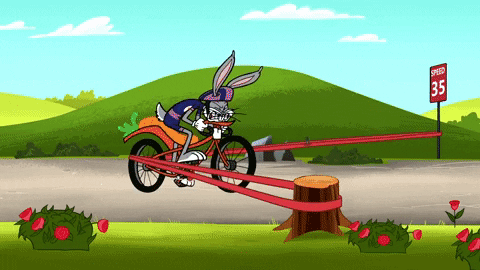Full Body Resistance Tube Workout
Often times we are stuck at home and we want to get a workout in but we lack the equipment to get the work done. Maybe we don’t have the time to drive to the gym, warm up, walk around and prepared, get the workout in, and then clean up and drive home. We need something that will last fifteen, twenty, or thirty minutes that doesn’t require a lot of equipment
That is where PowerLastic bands come into play. We can target specific muscle groups using PowerLastic bands. We can create a significant amount of tension while increasing our strength, get our heart rate up, and increase muscle tone so we feel good, get a sweat in, and feel like we accomplished something for the day. That is the biggest concept we have to keep in mind.

Working out we want to improve our overall mobility, strength, and stability. We also just need to get the blood flowing and the heart pumping to get a good workout in.
Let’s look at a whole bunch of key exercises that can be used to train the entire body using just one PowerLastic band.
1 & 2. Banded Squat & Banded Standing Row
To do this movement we want to stand on the PowerLastic band and hold the bands with the hands draped over the shoulders.

From there, we squat. We want to pay attention and assure that the knees are tracking over the toes, the whole foot is staying grounded, and that we maintain good tension at the top. One of the best things about the PowerLastic band is there is more tension at the top so the abs and quads are targeted a little bit more. The front rack also targets the upper back.
One little trick to make the band have more tension, fold the band in between the feet so that the band is tighter at the top range of motion. Taller athletes may not need to do this. Shorter athletes can definitely fold up the band a little bit.
Do this movement for four sets of seventeen reps to get things started.
The next movement is the banded standing row. We want to wake up the upper back and lats while performing this movement. We also want to target the biceps a little bit while focusing on retracting the scaps at the top of the movement.

We like to perform the banded standing row back to back with the banded squats. This way we minimize the duration of the workout. Combining the lower body movement with the upper body pull gives the muscles a rest of sorts. Yes, many movements coordinate muscles together but the zeroed in focus of each movement is in stark contrast.
Just like the banded squats, perform four sets of seventeen reps of this exercise.
3. Banded Squat Press
Now that the legs and upper back are warmed up, it is time we added a press into the mix.
Remember, with a full-body workout we want to target the shoulders, the lats, abs, the legs, and every muscle in between.

Doing this movement we want to squat deep down into the hole and then accelerate up in the squat. In the same flow of movement, at the top, we will extend with a nice drive and lock-out to work the shoulder strength and lock-out. We really want to utilize every single muscle in the body to hammer home that full-body workout.
Again, perform four sets of seventeen of this movement to get the muscles firing and the blood pumping.
4. Side Band Walk In Overhead Position
The overhead position is an isometric hold. The elbows are lockout overhead, holding tension in the bands. The legs are in a quarter squat. The movement comes from the feet side-stepping, sliding from side to side.
This movement will target the obliques, read-delts, traps, and into the glutes. We want to see twelve to fifteen reps in each direction for three to four sets. We want to really feel the glutes and quads connected through the feet, feeling good tension up through the upper back.
5. Banded Single-Leg RDL Into Hip Lock W/ Row
The next movement should pair with #4 and brings in some unilateral work. This movement targets the hamstrings, lower back, glutes (which are pre-fatigues), into the row which will force a focus on trunk stability and control. We want to do three to four sets of seven reps on each leg.


We want to really feel the hamstring drive through the heel. We want to also squeeze the abs in the upright, hip lock position. This movement is really good to improve balance and stability. It will also indicate any structural integrity issues, showcasing the stronger and weaker side. We recommend doing the weaker side first.
6 & 7. Banded Lunge & Banded Standing Press
Anchor the band to an immovable object. Wrap the band around the hips, holding it with the hands to keep the band in place on the body. We want to alternate lunging from leg to leg. We want to lunge forward and pause for a quick moment in the hole. The band will be pulling us back in so we have to exhibit control through the feet and torso as we come back to the top position. The band will also help keep the hips extended while the back and torso are nice and upright, reinforcing the upright posture to enhance dynamic trunk control. Pro tip: to target the glutes and hamstrings, even more, lengthen the stride.
Do three to four sets for seven reps on each leg.
Our next movement, the standing press, is similar to a standing bench press. It will target the delts, chest, and triceps. We want to work on pressing and holding the lockout position. This movement can be performed in a bilateral stance or in a staggered stance.

Just remember, if a staggered stance is used, make sure the staggered stance is done with both feet forward for an equal amount of reps to ensure structural integrity. Also, when extending, we need to squeeze through the abs while making sure the upper back is nice and tight.
Do this movement for three to four sets of five to seven reps.
8. Backward Banded Walk
Like the lunge, we want the band around the hips and anchored to an immovable object. The main difference is that the front of the torso will be facing the immovable object the band is anchored to. From there we want to squat down to almost ninety degrees, focusing on the quads and developing good quad strength. Added bonus is this movement will help increase stability in the knee joints, especially for people with knee issues.
We want to walk back slowly. Once the band reaches an ideal tension, we want to walk back in slowly. The band will be pulling us back in. It is key that we go nice and slow through the eccentric positioning. Ideally, we want to do three to four sets of this movement for a time duration of one to one and a half minutes of the exercise. We promise that after thirty seconds the quads will light up.
This movement can be utilized as a finisher. It can also be used as a warm-up. Just remember, as the fatigue sets in, keep the butt lower and try not to get too tall. One little twist that can be utilized in this movement is to perform the movement while holding plantar flexion (on the tip-toes) while walking backward and forward.
Recap
With a set of PowerLastic bands, this workout can be done in twenty to thirty minutes. The movements will get the heart rate going, improve strength throughout the muscles, and save time on not having to commute to and from the gym. Best of all, completing the workout will ensure the feeling of accomplishment occurs within the day.
DANE MILLER
Dane Miller is the owner and founder of Garage Strength Sports Performance. He works with a select handful of clients on building comprehensive programs for fitness and nutrition. Several times a year he leads a workshop for coaches, trainers, and fitness enthusiasts.

